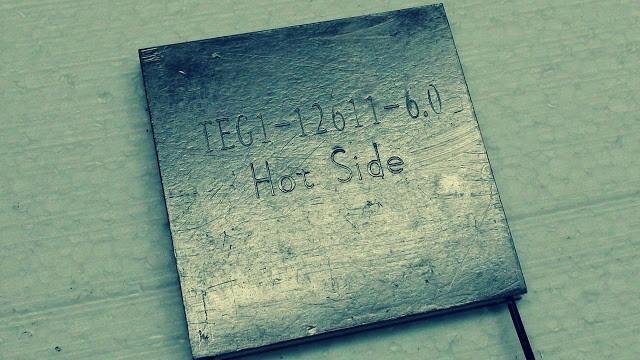The development of thermoelectric technology that converts heat to the present continues to be developed non-stop. Researchers are using mechanical effects. This technique can be used for industrial scale and home electronic devices. In the future, electrical energy will be generated from the engine.

Many power generation technologies are generated from wastes, such as energy-energy energy Carbon Dioxide Scientists explain how to maximize the use of magnets on nickel and platinum composites. This is intended to strengthen the output 10 times or greater. This composite material is not a thin film like the previous research, but a thick piece that could be useful for future electronic device components.
Termoelektrik, Hot Heat Be Electrical
We have a lot now. The hardware directly generates heat from the operating system. This heat needs waste that just wasted, try to be observed can produce electrical charges. The development of Thermoelectrics Solid-state (Thermoelectric) technology to process 'waste heat' through special materials to generate energy and improve overall efficiency.

During this time, more than half of the energy generated from the heat of various devices is wasted into the atmosphere, thus further adding to the problem at Earth's temperature. The development of Thermoelectrics Solid-state technology can help utilize thermal energy into electricity. This device has moving parts, is not easy to wear, strong, and does not require maintenance. The existing tools are still too expensive and inefficient for the general public. How to find more efficient products and affordable prices.
In 2012, Joseph Heremans has proven his magnetic field could increase the effects of quantum mechanics called the Seebeck spin effect. This effect can be increased the output voltage of thin films made of Nano-structured materials. Currently the Termoelectric device has increased its output resulting from a combination of nickel and platinum metals. And the simpler devices do not require Nanofabrication and can be easily fixed for industrial scale.
Scientists use the same technique using thick material pieces, and thermodynamic and thermoelectric regulations. On the term, classical thermodynamics. Machine fluid or fluid. While in technology
Termoelektrik uses electrons as fluids that function as Quanta Magnetization or Magnon. Magnon-based thermodynamic studies until now have always been done using thin films that produce very little electrical voltage.
The same technique is also used on platinum pieces larger than films made from composite materials. It is used to maximize the heat utilization process. This research will inspire further research that will create applications for waste heat generators, including car and jet engines. Of course, constrained in the price, because the platinum material price is still quite expensive.
Reference
One step closer to reality: a device that converts heat into electricity, 22 Dec 2016, by Ohio State University.Observation of Seebeck's spin contribution on transverse thermopower on Ni-Pt and MnBi-Au nanocomposites. Natural Communication, 2016; 7: 13714 DOI: 10.1038 / ncomms13714Giant spin Seebeck effect in non-magnetic material. Nature, 2012; 487 (7406): 210 DOI: 10.1038 / nature11221Selects directory Seebeck, pictures by Wikimedia Commons
Hi! I am a robot. I just upvoted you! I found similar content that readers might be interested in:
https://steemit.com/science/@parkyingnam/termoelektrik-how-to-turn-heat-energy-into-electricity-20171031t235121664z
Downvoting a post can decrease pending rewards and make it less visible. Common reasons:
Submit
Congratulations @bangmul! You have completed some achievement on Steemit and have been rewarded with new badge(s) :
Click on any badge to view your own Board of Honor on SteemitBoard.
For more information about SteemitBoard, click here
If you no longer want to receive notifications, reply to this comment with the word
STOPDownvoting a post can decrease pending rewards and make it less visible. Common reasons:
Submit